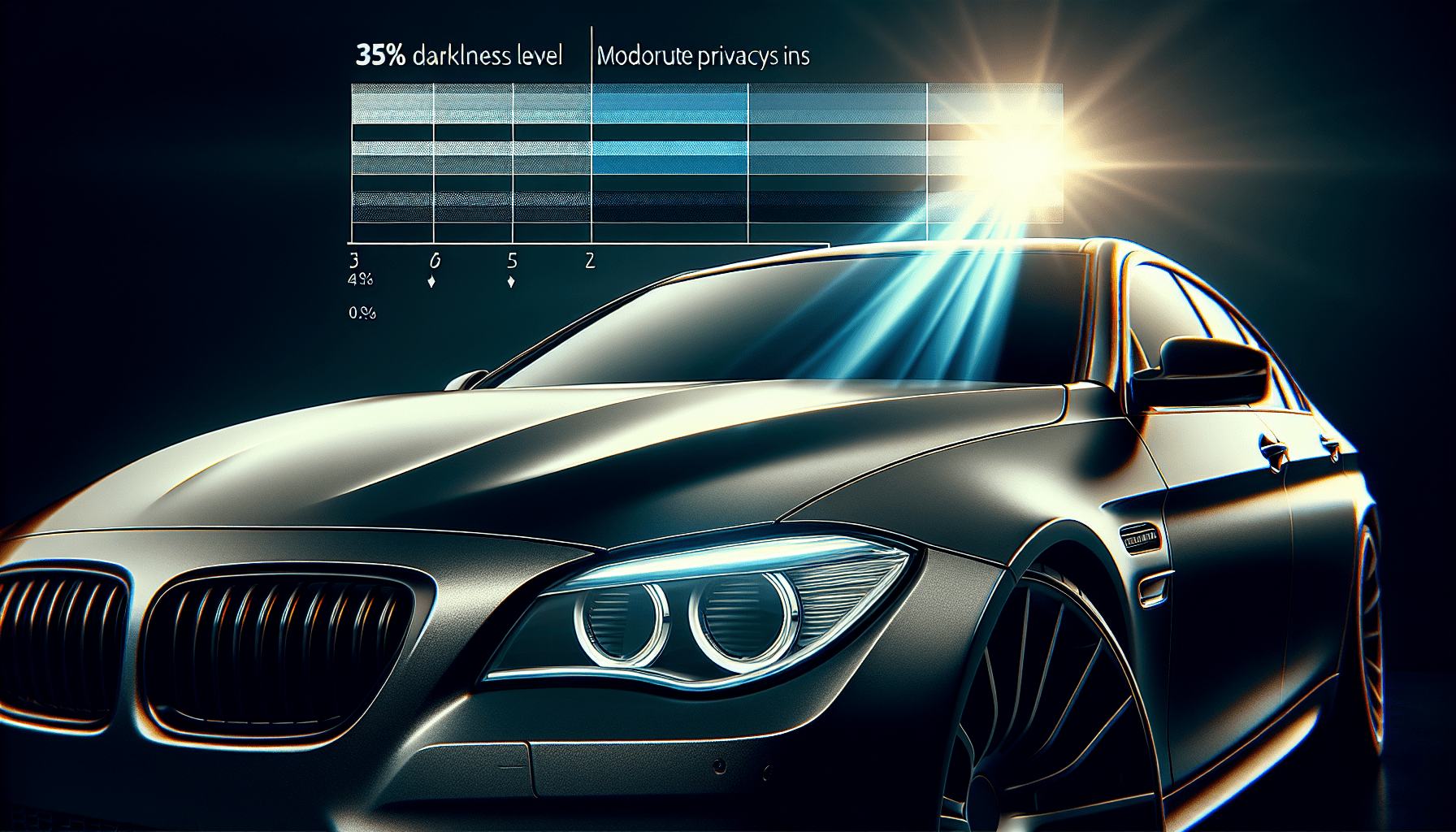Understanding Window Tint Darkness Levels
When it comes to window tinting, the darkness level is an important factor to consider. The darkness level is typically referred to as a percentage, indicating how much light is allowed to pass through the tint. One common question that arises is whether 35% on the windshield is too dark. Let’s delve into the different darkness levels and their implications.
What Does 35% Darkness Level Mean?
A 35% darkness level on window tint means that only 35% of visible light can pass through the tint. This level of tint darkness offers moderate privacy and heat rejection while still allowing a considerable amount of light to enter the vehicle. It strikes a good balance between aesthetics and practicality.
Legal Regulations on Windshield Tint Darkness
Before deciding on a tint darkness level for your windshield, it’s crucial to consider the legal regulations in your state or country. These regulations dictate the maximum allowable darkness level for different windows, including windshields. Window tinting laws vary widely, so it’s essential to familiarize yourself with the specific guidelines in your area.
Pros and Cons of 35% Darkness Level on Windshield
Now that you understand what a 35% darkness level means, let’s explore the advantages and disadvantages of choosing this tint darkness level for your windshield.
Pros:
- Moderate Privacy: A 35% darkness level provides a moderate level of privacy, making it harder for outsiders to see into the vehicle.
- Heat Rejection: This darkness level offers decent heat rejection, helping to keep the interior of the vehicle cooler on hot days.
- Aesthetically Pleasing: 35% tint darkness strikes a balance between a sleek appearance and practicality, enhancing the overall look of the vehicle.
Cons:
- Legal Concerns: In some areas, a 35% darkness level on the windshield may exceed legal limits, leading to potential fines or penalties.
- Visibility: While 35% tint darkness allows a considerable amount of light to pass through, it may slightly reduce visibility, especially at night or in low-light conditions.
Factors to Consider When Choosing Windshield Tint Darkness
Before deciding on a specific darkness level for your windshield tint, there are several important factors to consider. Taking these factors into account will help you make an informed choice that aligns with your preferences and needs.
Climate and Weather Conditions
The climate and weather conditions in your area play a significant role in determining the ideal tint darkness level for your windshield. If you live in a hot and sunny region, you may benefit from a darker tint level for better heat rejection. On the other hand, if you frequently drive in low-light conditions, a lighter tint may be more suitable to maintain visibility.
Legal Requirements
As mentioned earlier, it’s crucial to be aware of the legal regulations regarding windshield tint darkness in your area. Ensure that the darkness level you choose complies with the local laws to avoid any potential issues with law enforcement.
Personal Preferences
Your personal preferences and priorities also influence the choice of tint darkness level for your windshield. If you value privacy and aesthetics, a darker tint may be preferable. However, if visibility and legal compliance are your top concerns, a lighter tint might be more suitable.
Vehicle Usage Patterns
Consider how you use your vehicle on a daily basis when deciding on the tint darkness level. If you frequently drive during the day in sunny conditions, a darker tint may offer more comfort and protection. Conversely, if you often drive at night or in low-light environments, a lighter tint is recommended to maintain visibility.
Alternative Tint Darkness Levels for Windshields
In addition to 35% darkness level, there are other tint darkness options available for windshields, each with its own set of characteristics and benefits. Here are a few alternatives to consider:
Lighter Tint (50% or Higher)
- Pros: Excellent visibility, minimal privacy, legal compliance in most areas, less heat rejection.
- Cons: Limited privacy and heat rejection, may not offer the desired aesthetics.
Darker Tint (20% or Lower)
- Pros: Increased privacy, superior heat rejection, enhanced aesthetics.
- Cons: Reduced visibility, potential legal issues, may be too dark for nighttime driving.
Conclusion: Finding the Right Balance
In conclusion, choosing the optimal darkness level for your windshield tint involves a careful consideration of various factors, including legal regulations, climate conditions, personal preferences, and vehicle usage patterns. While a 35% darkness level offers a balance between privacy, aesthetics, and practicality, it’s essential to assess your individual needs before making a decision. By evaluating these factors and weighing the pros and cons of different tint darkness levels, you can find the perfect balance that suits your vehicle and lifestyle. For expert advice and professional tinting services, Xclusive Wraps and Tint is here to assist you every step of the way. Contact us today to elevate your vehicle’s style and protection with our premium tinting solutions.
Remember, your windshield is not just a piece of glass – it’s a vital component of your vehicle that deserves the best care and attention. Find the perfect tint darkness level that enhances your driving experience and complements your style. From privacy and heat rejection to visibility and aesthetics, the right tint darkness level can make a significant difference in how you feel behind the wheel. Choose wisely, and enjoy the benefits of superior window tinting for your vehicle.



